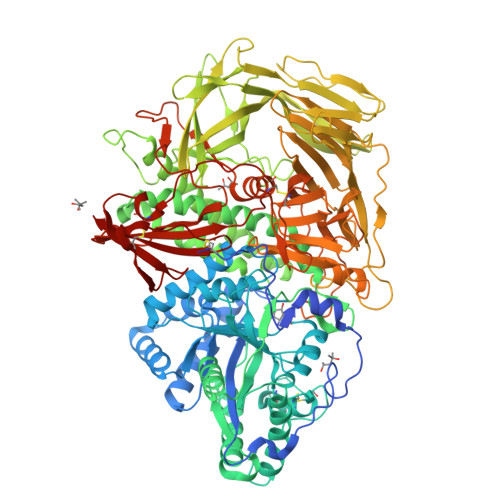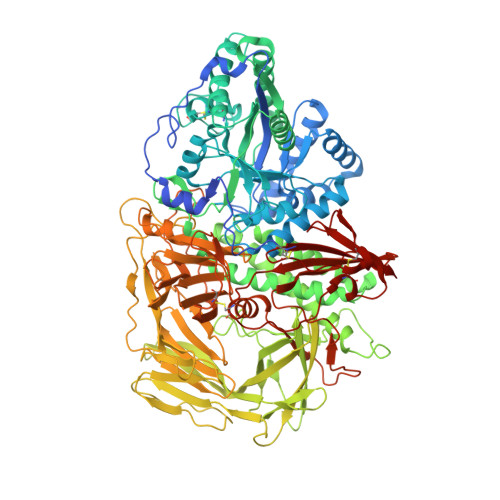The molecular basis of inhibition of Golgi alpha-mannosidase II by mannostatin A.
Kuntz, D.A., Zhong, W., Guo, J., Rose, D.R., Boons, G.J.(2009) Chembiochem 10: 268-277
- PubMed: 19101978
- DOI: https://doi.org/10.1002/cbic.200800538
- Primary Citation of Related Structures:
3DX0, 3DX1, 3DX2, 3DX3, 3DX4 - PubMed Abstract:
Mannostatin A is a potent inhibitor of the mannose-trimming enzyme, Golgi alpha-mannosidase II (GMII), which acts late in the N-glycan processing pathway. Inhibition of this enzyme provides a route to blocking the transformation-associated changes in cancer cell surface oligosaccharide structures. Here, we report on the synthesis of new Mannostatin derivatives and analyze their binding in the active site of Drosophila GMII by X-ray crystallography. The results indicate that the interaction with the backbone carbonyl of Arg876 is crucial to the high potency of the inhibitor-an effect enhanced by the hydrophobic interaction between the thiomethyl group and an aromatic pocket vicinal to the cleavage site. The various structures indicate that differences in the hydration of protein-ligand complexes are also important determinants of plasticity as well as selectivity of inhibitor binding.
Organizational Affiliation:
Ontario Cancer Institute and Department of Medical Biophysics, University of Toronto, Toronto, Ontario M5G 1L7, Canada.




















